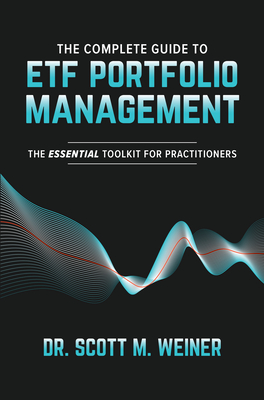Principles of Bioinspired and Biomimetic Regenerative Medicine
暫譯: 生物啟發與仿生再生醫學原則
Ghorbani, Farnaz, Ghalandari, Behafarid, Liu, Chaozong
- 出版商: Springer
- 出版日期: 2025-06-21
- 售價: $11,040
- 貴賓價: 9.5 折 $10,488
- 語言: 英文
- 頁數: 961
- 裝訂: Hardcover - also called cloth, retail trade, or trade
- ISBN: 3031877438
- ISBN-13: 9783031877438
-
相關分類:
生物資訊 Bioinformatics
海外代購書籍(需單獨結帳)
商品描述
商品描述(中文翻譯)
自然界發展出多樣的材料、結構和過程,這些都是為了各種功能而高度優化的。透過生物模仿(biomimicry)和生物啟發(bioinspiration)領域,工程師們增強了對自然設計原則的理解,並將這些見解應用於創建不同尺度的複雜工程模型。這些創新方法特別適合用來解決組織工程和再生醫學中的挑戰。
自然材料和系統展現出多樣的功能,包括但不限於結構支撐、信號傳遞、電荷轉移、自組裝、自組織和自我複製。因此,自然的「解決手冊」是相當全面的。儘管取得了顯著的進展,但使用合成材料重建自然啟發的設計仍然面臨持續的挑戰。因此,自然及生物啟發的材料和架構已成為組織工程和再生醫學領域的一種範式轉變。本綜合指南旨在為科學家提供靈感,以直接應用既定的設計原則來解決組織再生中的各種關鍵挑戰。本書的一個主要重點是利用生物啟發的架構於組織工程中。它還強調通過整合新型生物大分子、生物啟發的聚合物和水凝膠,以及仿生陶瓷來開發自然啟發的結構。此外,文本集中於生物啟發表面工程的生化和生物物理維度。對於表徵自然和生物啟發材料及結構的乾實驗室和濕實驗室方法論也有探討。本出版物旨在促進已建立和新興科學家之間高水平轉譯知識的發展。
作者簡介
Farnaz Ghorbani: Farnaz Ghorbani, PhD in Biomaterials, is a Research Fellow at Bristol Medical School, University of Bristol (UK), specializing in biomaterials and translational tissue engineering. She has received several prestigious awards and has led multiple multidisciplinary research projects as a Principal Investigator at Friedrich-Alexander University Erlangen-Nuremberg (Germany), University College London (UK), and Fudan University (China). She co-founded a company specializing in biomaterials and 3D printing (Tehran, Iran), underscoring her commitment to translating research into real-world applications. Her expertise lies in the design and development of bioinspired structures and materials, drawing inspiration from nature to engineer advanced biomaterials for regenerative medicine. Her research encompasses protein-mediated surface functionalization, aiming to enhance cell-material interactions and direct tissue regeneration. With a strong focus on translational strategies for osteochondral defect repair, she integrates surface modification techniques, bio-inspired scaffolds, and biomaterials-driven approaches to bridge the gap between fundamental research and clinical applications.
Behafarid Ghalandari: Behafarid Ghalandari, PhD in Biophysics, is a Research Fellow at the Division of Surgery and Interventional Science at University College London, specializing in biophysics and computational biomaterials research. His work has earned several prestigious awards, and he has led multiple interdisciplinary research projects as a principal investigator. He explores protein-based nanostructures and peptide-based materials using in silico and experimental methods, with applications in biomaterials science and biomedical engineering. Additionally, he investigates how proteins and peptides modify material surfaces to enhance biomaterial properties. His research also focuses on polymer- and nanoparticle-protein interactions, studied through spectroscopic and computational techniques. Leveraging his multidisciplinary expertise, he advances computational modelling and materials science, contributing to the development of novel biomaterials for medical and nanotechnology applications.
Chaozong Liu: Chaozong Liu is a Professor of Orthopaedic Bioengineering at UCL Institute of Orthopaedics & Musculoskeletal Science, Division of Surgery & Interventional Science, in associate with the Royal National Orthopaedic Hospital Stanmore. He is the MSc in Musculoskeletal Science Course Tutor, Group Leader of UCL Orthopaedic Bioengineering Group and the Director of Centre for Bioengineering and Surgical Technology the Division of Surgery and Interventional Science, University College London. His current research is directed toward biomedical devices processing for enhancing the early diagnosis and treatment of musculoskeletal disorders. Specifically, his research interest includes (1) design and development of scaffolds for musculoskeletal tissue engineering and regenerative medicine. (2) Customized medical devices for intervention of musculoskeletal disorders. (3) biomedical device surface processing for regulate protein adsorption and cells attachment. (4) biomaterials and additive manufacturing innovation for orthopaedic medical devices.
作者簡介(中文翻譯)
**法爾納茲·戈爾巴尼 (Farnaz Ghorbani)**:法爾納茲·戈爾巴尼擁有生物材料博士學位,現為英國布里斯托大學醫學院的研究員,專注於生物材料和轉譯組織工程。她獲得了多項著名獎項,並在德國弗里德里希-亞歷山大大學埃爾朗根-紐倫堡、英國倫敦大學學院和中國復旦大學擔任首席研究員,領導多個跨學科研究項目。她共同創立了一家專注於生物材料和3D列印的公司(伊朗德黑蘭),彰顯了她將研究轉化為實際應用的承諾。她的專業領域包括設計和開發仿生結構和材料,從自然中汲取靈感,為再生醫學工程先進的生物材料。她的研究涵蓋了蛋白質介導的表面功能化,旨在增強細胞與材料之間的相互作用並引導組織再生。她強調針對骨軟骨缺損修復的轉譯策略,整合表面改性技術、仿生支架和以生物材料為驅動的方法,以縮短基礎研究與臨床應用之間的距離。
**貝哈法里德·卡蘭達里 (Behafarid Ghalandari)**:貝哈法里德·卡蘭達里擁有生物物理學博士學位,現為倫敦大學學院外科與介入科學部的研究員,專注於生物物理學和計算生物材料研究。他的工作獲得了多項著名獎項,並作為首席研究員領導多個跨學科研究項目。他利用計算和實驗方法探索基於蛋白質的納米結構和基於肽的材料,應用於生物材料科學和生物醫學工程。此外,他研究蛋白質和肽如何改變材料表面以增強生物材料的特性。他的研究還專注於聚合物和納米顆粒與蛋白質的相互作用,通過光譜學和計算技術進行研究。憑藉其跨學科的專業知識,他推進了計算建模和材料科學,為醫療和納米技術應用開發新型生物材料做出貢獻。
**劉超宗 (Chaozong Liu)**:劉超宗是倫敦大學學院骨科生物工程教授,隸屬於外科與介入科學部,並與皇家國立骨科醫院斯坦莫爾合作。他是肌肉骨骼科學碩士課程的導師、倫敦大學學院骨科生物工程小組的組長,以及外科與介入科學部生物工程與外科技術中心的主任。他目前的研究方向是生物醫療設備的處理,以增強肌肉骨骼疾病的早期診斷和治療。具體而言,他的研究興趣包括:(1) 用於肌肉骨骼組織工程和再生醫學的支架設計與開發。(2) 用於介入肌肉骨骼疾病的定制醫療設備。(3) 生物醫療設備表面處理以調節蛋白質吸附和細胞附著。(4) 用於骨科醫療設備的生物材料和增材製造創新。






























